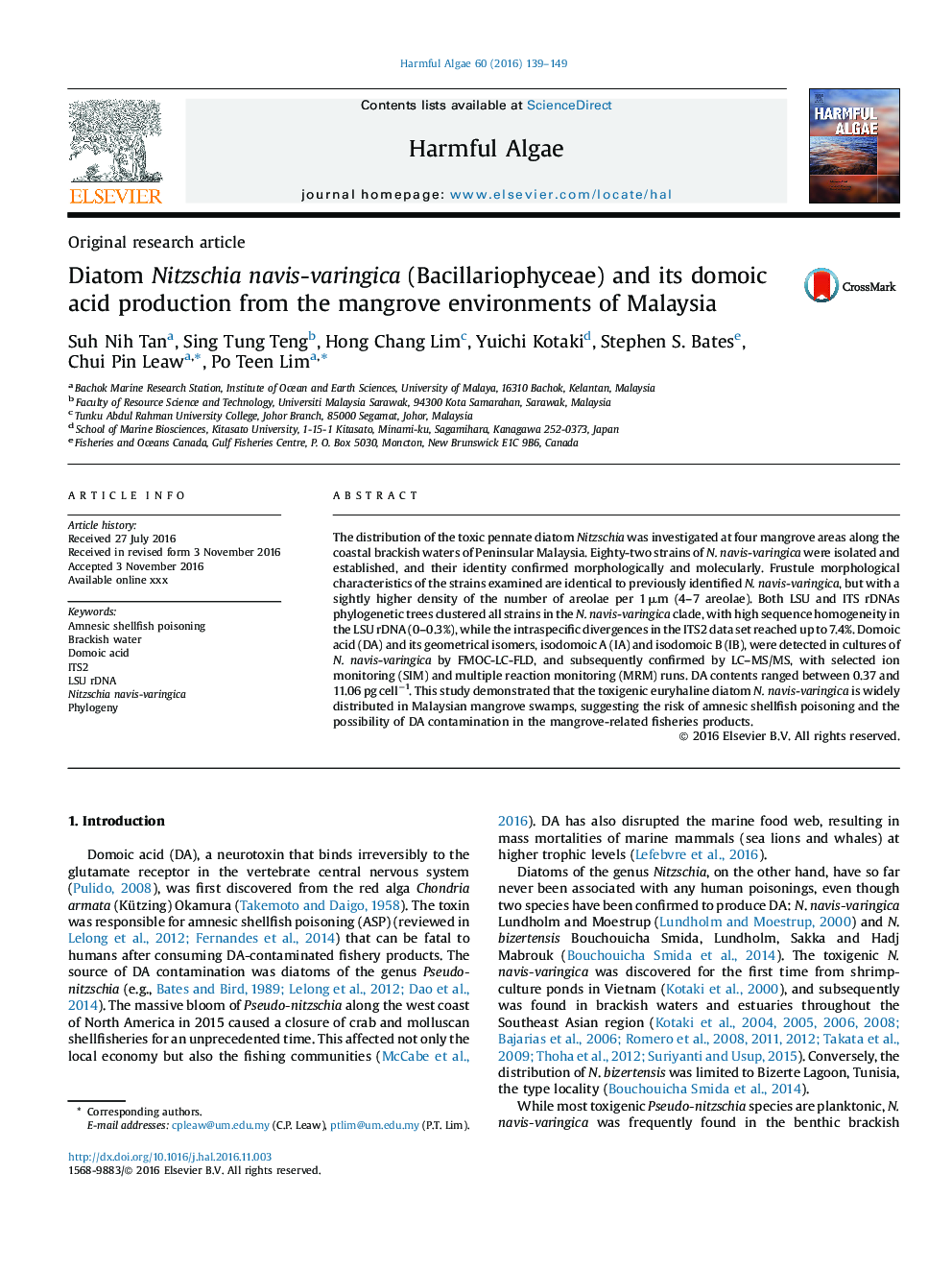| Article ID | Journal | Published Year | Pages | File Type |
|---|---|---|---|---|
| 8885764 | Harmful Algae | 2016 | 11 Pages |
Abstract
The distribution of the toxic pennate diatom Nitzschia was investigated at four mangrove areas along the coastal brackish waters of Peninsular Malaysia. Eighty-two strains of N. navis-varingica were isolated and established, and their identity confirmed morphologically and molecularly. Frustule morphological characteristics of the strains examined are identical to previously identified N. navis-varingica, but with a sightly higher density of the number of areolae per 1 μm (4-7 areolae). Both LSU and ITS rDNAs phylogenetic trees clustered all strains in the N. navis-varingica clade, with high sequence homogeneity in the LSU rDNA (0-0.3%), while the intraspecific divergences in the ITS2 data set reached up to 7.4%. Domoic acid (DA) and its geometrical isomers, isodomoic A (IA) and isodomoic B (IB), were detected in cultures of N. navis-varingica by FMOC-LC-FLD, and subsequently confirmed by LC-MS/MS, with selected ion monitoring (SIM) and multiple reaction monitoring (MRM) runs. DA contents ranged between 0.37 and 11.06 pg cellâ1. This study demonstrated that the toxigenic euryhaline diatom N. navis-varingica is widely distributed in Malaysian mangrove swamps, suggesting the risk of amnesic shellfish poisoning and the possibility of DA contamination in the mangrove-related fisheries products.
Related Topics
Life Sciences
Agricultural and Biological Sciences
Aquatic Science
Authors
Suh Nih Tan, Sing Tung Teng, Hong Chang Lim, Yuichi Kotaki, Stephen S. Bates, Chui Pin Leaw, Po Teen Lim,
